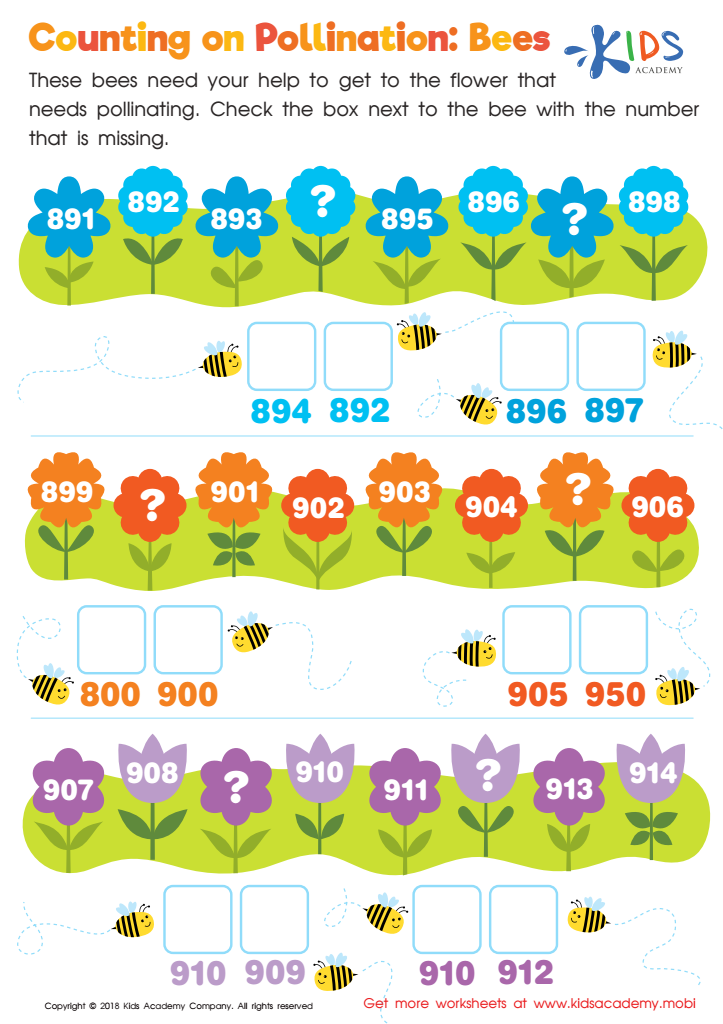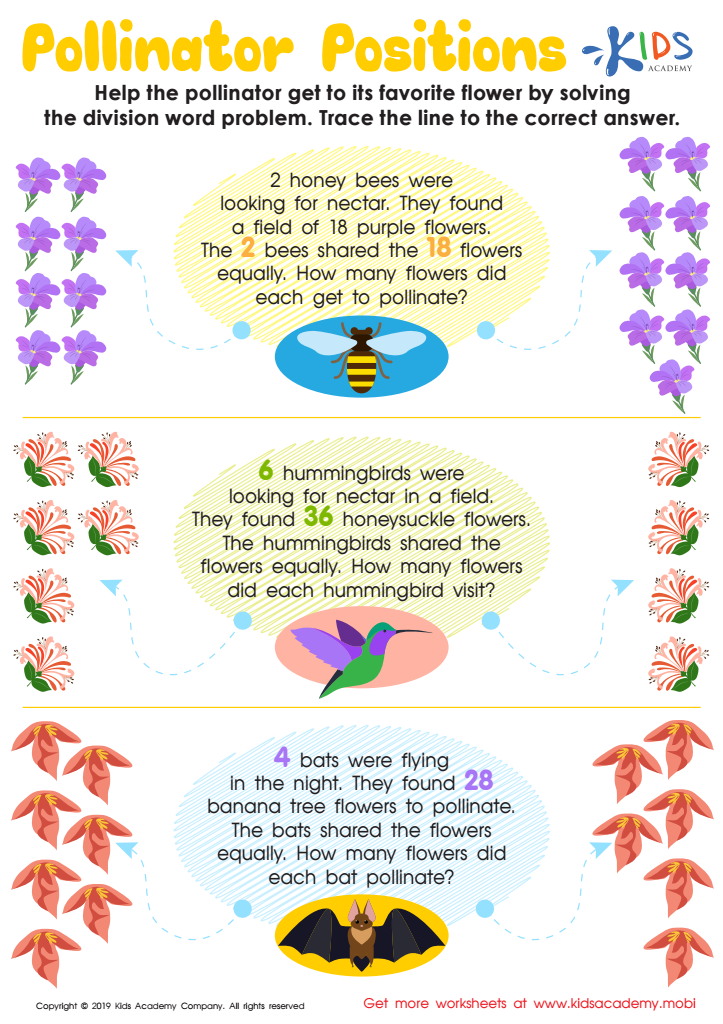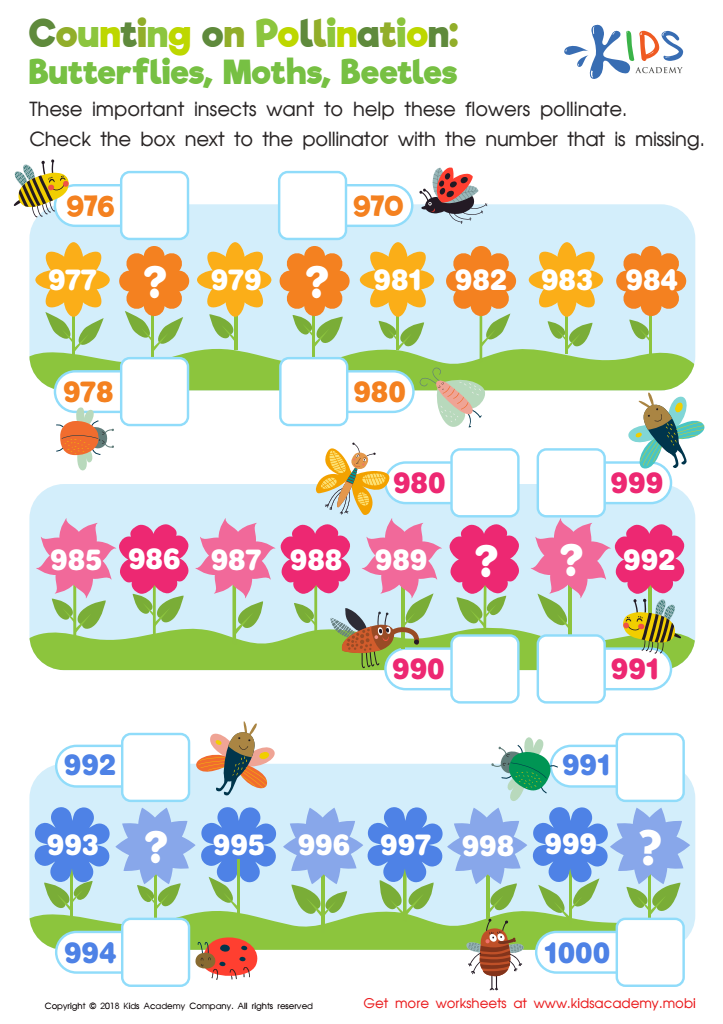Understanding pollination Normal Math Worksheets for 7-Year-Olds
3 filtered results
-
From - To
Explore the fascinating world of pollination with our "Understanding Pollination Normal Math Worksheets" designed specifically for 7-year-olds! These engaging worksheets seamlessly blend math skills with lessons on pollination to enhance learning. Children will undertake various fun math problems that incorporate themes of flowers, bees, and the essential role pollination plays in nature. Our worksheets foster critical thinking and creativity, making math an exciting adventure. Ideal for classroom use or at-home practice, each activity encourages children to develop both their mathematical abilities and an appreciation for environmental science. Dive into this enriching educational experience today and watch young learners flourish!


Counting on Pollination: Bees Worksheet


Pollinator Positions Worksheet


Counting on Pollination: Butterflies, Moths, Beetles Worksheet
Understanding pollination is vital for 7-year-olds as it connects them to nature and the environment, fostering an appreciation for the ecosystem. Pollination plays a crucial role in the life cycle of plants, which in turn produce the food we eat. By learning about this process, children can grasp the importance of biodiversity and the roles that organisms, such as bees and butterflies, play in agriculture and food production.
Additionally, teaching about pollination provides an opportunity to integrate concepts from various subjects, including math. For instance, they can practice counting by tallying the number of plants, insects, or fruits involved in pollination. By incorporating math into these lessons, educators can help students develop their critical thinking and problem-solving skills while exploring the natural world.
Moreover, understanding pollination lays the groundwork for future lessons on ecosystems, sustainability, and environmental science. When children recognize how interconnected life is, they are more likely to become responsible, environmentally-conscious adults. Parents and teachers alike should care about these foundational concepts, as they not only enhance academic learning but also encourage a sense of stewardship towards our planet. Ultimately, this knowledge empowers young learners to make informed decisions regarding their environment and food sources.
 Assign to My Students
Assign to My Students




















